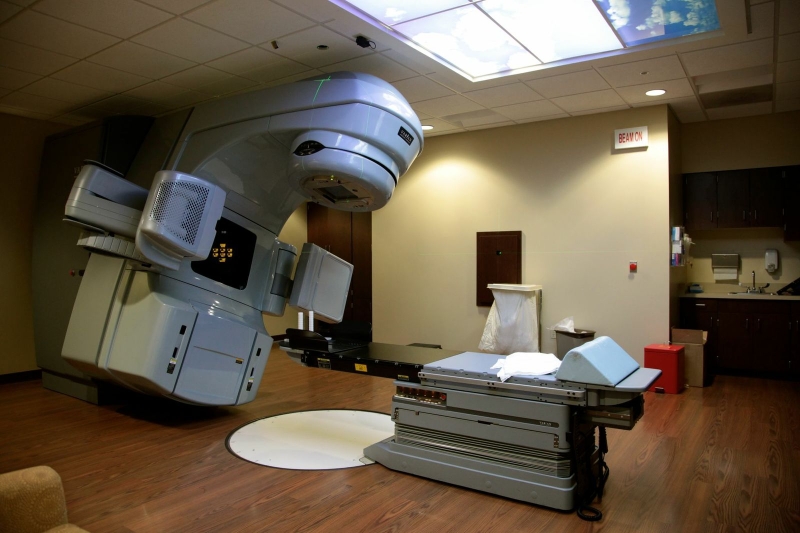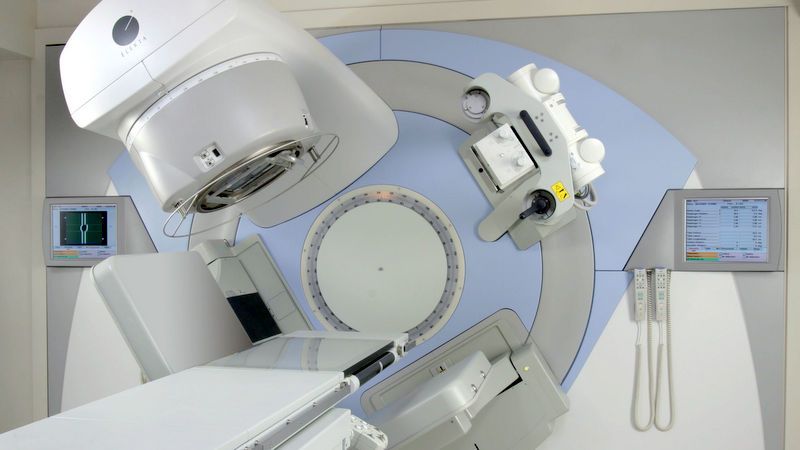IMRT & IGRT
Quick and painless, external-beam radiation therapy has long been used to destroy cancer cells. The latest methods—Intensity-Modulated Radiation Therapy (IMRT) and Image-Guided Radiation Therapy (IGRT)—provide the most advanced technology for fighting cancer. Used alone or in conjunction, these therapies allow higher doses of radiation to be delivered with greater precision without destroying surrounding, healthy tissue.
For patients, IMRT/IGRT means:
- more effective treatment focused on cancer cells.
- less radiation exposure to normal tissue.
- potentially fewer and milder side effects.
- the ability to treat some tumors that couldn’t previously be treated by radiation.
Since the prostate is located near the bladder, bowels, and anus, physicians traditionally limited the amount of external-beam radiation delivered close to these sensitive organs. Still, healthy tissue is often damaged when less precise methods are used. Unlike cancerous cells, normal cells can adapt and survive, but unnecessary radiation exposure can still lead to incontinence and bowel problems. While some of these side effects may manifest immediately, others develop over time. By increasing radiation exposure to malignant cells and decreasing it to healthy tissue, IMRT alone may reduce such complications.
Clinical studies conducted at Memorial Sloan Kettering Cancer Center indicate that higher dose rates delivered with IMRT significantly improve local tumor control while reducing some of the complications caused by damage to normal tissue.1,2 While IMRT may be used in conjunction with other treatments, it may also offer an noninvasive, outpatient alternative to surgery for some patients.
1 Zelefsky MJ, Chan H, Hunt M, et al, Long-term outcome of high dose intensity
modulated radiation therapy for patients with clinically localized prostate
cancer, Journal of Urology, 2006 Oct;172(4 Pt 1):1415-9.
2 Zelefsky MJ, Fuks Z, Hunt M, et al, High-dose intensity modulated radiation
therapy for prostate cancer: Early toxicity and biochemical outcome in
772 patients, International Journal of Radiation Oncology • Biology
• Physics, 2002 Aug 1; 53(5):1111-6.
How IMRT Works
 IMRT is a specialized radiation therapy that uses powerful treatment planning
software to calculate precise beam angles, shapes and exposure times tailored
to each tumor. The radiation beam can be broken up into many smaller beams
and the intensity of each small beam can be adjusted individually. This
may allow a higher dose of radiation to be delivered to the tumor with
less risk to nearby healthy tissue, potentially decreasing the duration
of treatment and increasing the chance of a cure.
IMRT is a specialized radiation therapy that uses powerful treatment planning
software to calculate precise beam angles, shapes and exposure times tailored
to each tumor. The radiation beam can be broken up into many smaller beams
and the intensity of each small beam can be adjusted individually. This
may allow a higher dose of radiation to be delivered to the tumor with
less risk to nearby healthy tissue, potentially decreasing the duration
of treatment and increasing the chance of a cure.
How IGRT Works

Tumors can move during a course of treatment. IGRT combines imaging and treatment capabilities on a single machine. This way, tumors can be tracked between, as well as during, treatments, allowing radiation to be focused more precisely. Images captured before each radiation session are compared to previous sessions so that clinicians know the exact location of the tumor each time. IGRT software also accounts for breathing and motion during treatment, ensuring the radiation stays focused on the tumor.
